In 1819, a former soldier of Napoleon discovered the caves, but it was only in 1836 that naturalists began to pay attention to them thanks to the exploration led by Professor Mermet. Later on, Larry, Campan and Ritter, three members of the Pau Alpine Club section took an interest in it. They were the first great explorers of these caves.
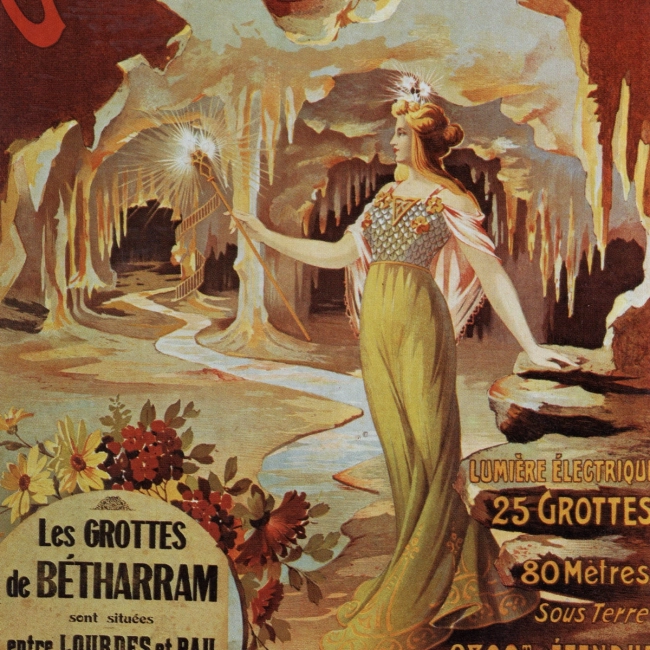


Léon Ross (1847-1933) was a painter and one of the first landscape photographers of the Pyrenees.
As a man of adventure, he followed the explorations of the Caves and, in 1900, took their development up to make them accessible to the public.
Despite major technical challenges, he electrified the Caves, a feat at the time, and built a bridge over the Gave de Pau river.
After bold work to develop the paths in the caves and electrify them, Léon Ross opened the Caves of Bétharram to the public in 1903.
Initially, visistors used to come to the Bétharram Caves by horse-drawn carriage from Lourdes and Pau. First of all, reserved for the most curious and adventurous people, the Caves will seduce over time an ever wider audience who will come to be filled with wonder.
With Edouard-Alfred Martel, a great French explorer of the underground world (1859-1938), Léon Ross continues the exploration with the dyeing of the river to discover where it emerges.
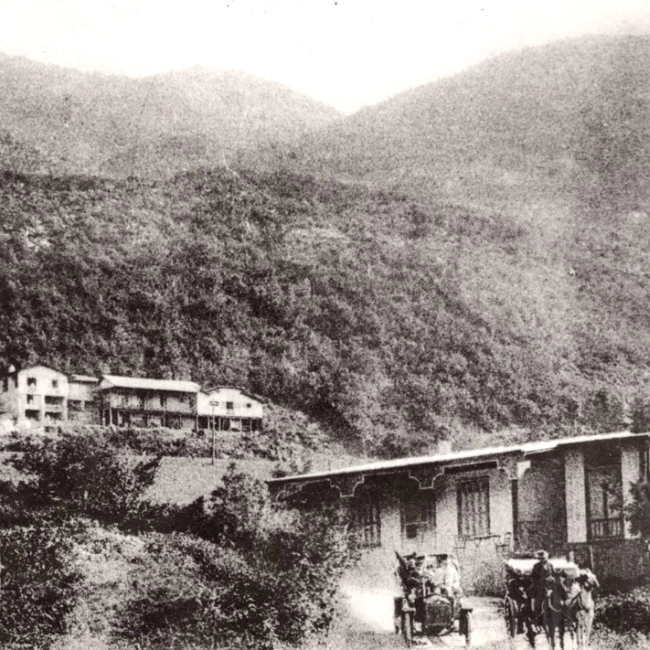
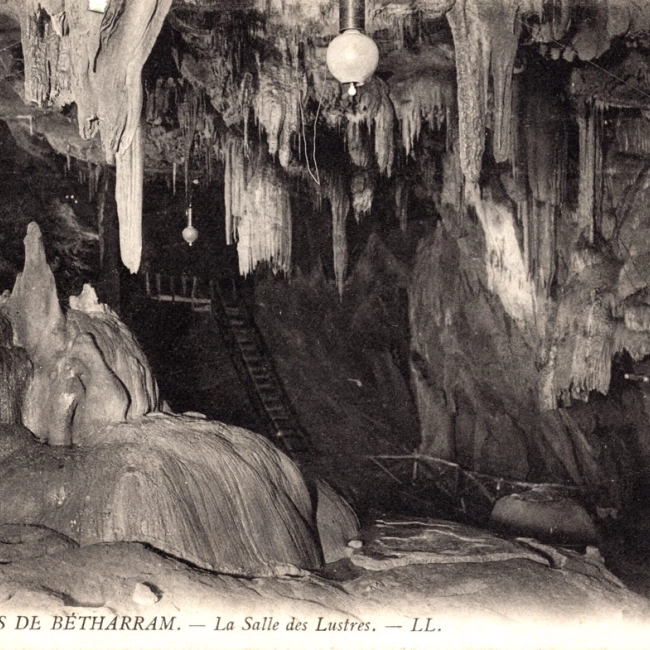
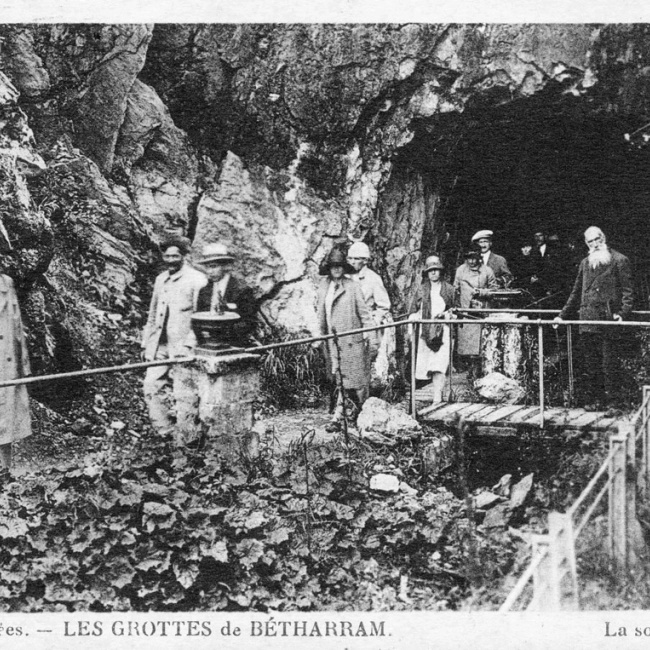


From generation to generation, the Bétharram Caves have developped with the will to offer the visit in the best conditions to the greatest number.
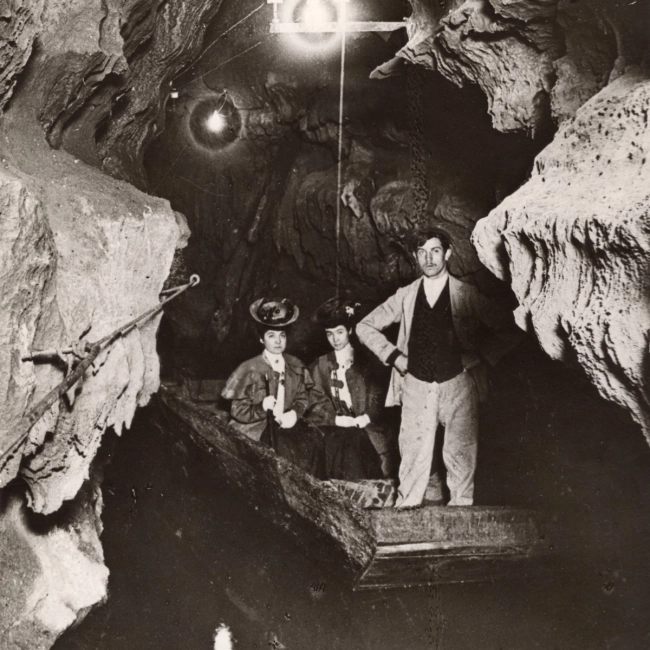
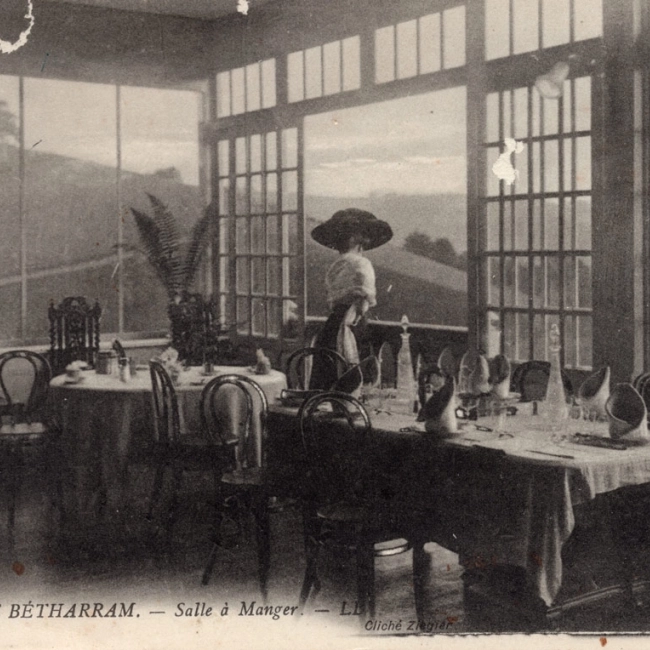
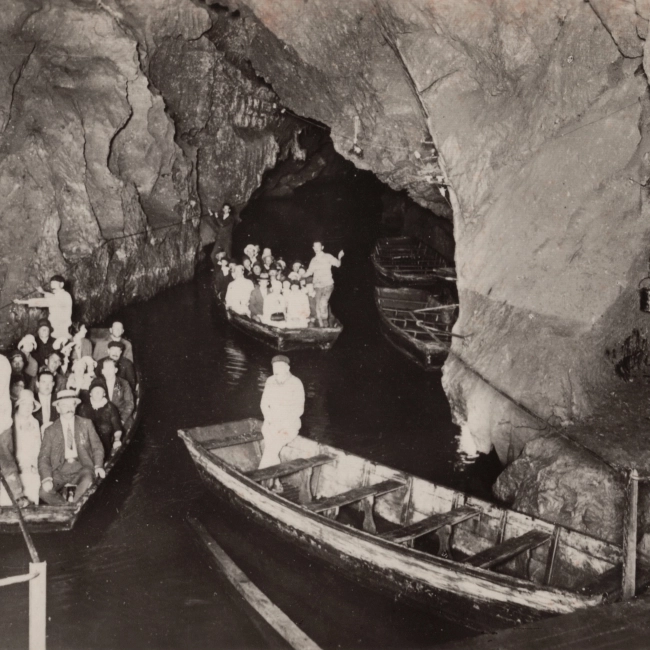
In 1918, Albert Ross took over after Léon and for 12 years, between 1913 and 1925, he undertook the construction of an exit tunnel. This achivement allowed visitors to get out of the cave without having to climb the chasm, making the visit accessible to the greatest number. Since then, visitors cross the mountain by entering from one side and leaving from another.
When he died in 1926, Marie, his wife, took over successfully. At the time, we can only imagine the considerable challenge it may had been for a woman but she took it up with courage and determination.
In 1955, her son Edmond, took the initiative to fit the explanations given by the guides on the site of the Bétharram caves with a sound system. In addition, he translated these explanations into five languages to meet the expectations of foreign visitors, a first in France at that time. In 1973, he also built a small electric train to transport visitors over the last 700 meters to the exit.
In 2000, his son Albert Ross initiated work to make the first floor of the caves accessible for wheelchair users. The original 120 steps have been replaced whith an access ramp so that all visitors can enjoy the experience equally.
In 2023, his son Ghislain Ross, takes over for the rest of this great adventure.